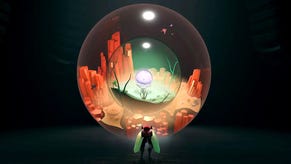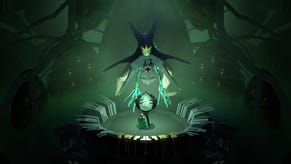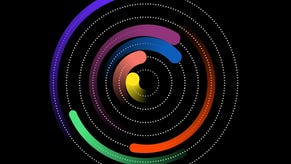Cocoon may be the best thing at Summer Games Fest
Getting wrapped up.
Right, elevator pitch: you're a nice little bug-person who wordlessly solves environmental puzzles in a mournful, sci-fi atmosphere; there's an earthy-pastel colour palette; there's a soft and pleasingly tactile feel to the world; it's got a nice font; it's made by the lead gameplay designer of Limbo and Inside; and it's published by Annapurna - who probably only got about two-thirds of the way through hearing that pitch before flinging open their wallet.
This sounds a little rote - maybe because the added sense of surprise that comes with these almost aggressively tasteful, prestige-indie darlings has faded a smidge in the face of familiarity, but also maybe because I've likely undersold it. Cocoon is brilliant.
Much of this comes down to atmosphere which, perhaps unsurprisingly given its pedigree, is magic. My demo - hosted at Play Days, Summer Game Fest's small in-person portion for media - began on a rocky terracotta world, scattered with abstract shapes and curious obelisks. The music is synthy and minimalist and so you just pitter-patter around the place, nudging at it. Quickly Cocoon becomes a game about nudging, in fact. You're nudged artfully onto the right path forwards in that very delicate hands-off way these games have now perfected. You nudge the edges of the world as you explore it - what's walkable? What moves? What does this do? And then you start nudging stuff around.
Cocoon's puzzles are tests of spatial reasoning, first, and then maybe short-term memory second. Much of them revolve around its seemingly central object, a magic orb, but after a simple start - pick orb up, put it in socket to activate thing, interact with some kind of obstacle (a platform, a wall, a kind of pinball funnel pipe, etc.), progress - Cocoon folds in on itself to find its big twist, and in doing so cascades outwards.
Upon reaching the end of a section, you find yourself launched out of your world to another one, more industrial and grey but still abstract and futurist. And you'll realise you were in fact inside an orb. And now you can pick that orb up, and carrying it has an effect: it makes once-invisible walkways visible, within a short radius, opening up new pathways through the world.
There are boss fights, but no combat - all you can do is trot around and pick up orbs, and so these become a game of increasingly intense evasion while finding other kinds of, you guessed it, orbs, to defeat the boss - and little puzzle sections that have you discover a sequence of runic shapes in the environment, and run over the correlating ones in order to sound the right little musical sci-fi wind chimes.


But then the real magic, Cocoon's cascading moment: what if there were two orbs? What if you had a green one, filled with another world, of leaves and moss and the lush patter of rain, like a playable lilipad, to go with your other orange dust bowl? And what if you could take one orb and bring it inside the other? This is the brilliance, the brain-wracking, brow-furrowing moment that evokes Portal or Patrick's Parabox, or even the better parts of Annapurna's own Maquette. Put the orange orb inside the green orb, carry them in the grey world, and now you can traverse a new kind of obstacle, columns of glowing turquoise that act as a sort of magic one-way elevator, turning solid when traversed one way or passable the other.
Soon you find yourself putting one orb in another, passing one gate, hopping back out to the grey world, bringing one orb with you, hopping back in, moving something else. You're back to nudging, now: drawing gloopy, sticky balls along little paths to align something in front of a locked door, flipping switches and jumping on pads, taking down another boss that has a whiff of gentle bullet-hell about it - and maybe a sense of warning of a ramping-up to come.
It's a wonderful start, and one of few demos at Summer Games Fest, I expect, where I'll have done all I could to stretch the time I had with it. The sense of surprise might have gone from arriving in the quiet, artful atmospheres of these games now but, as Cocoon has shown, that only makes the best of them stand out even more.










.png?width=291&height=164&fit=crop&quality=80&format=jpg&auto=webp)